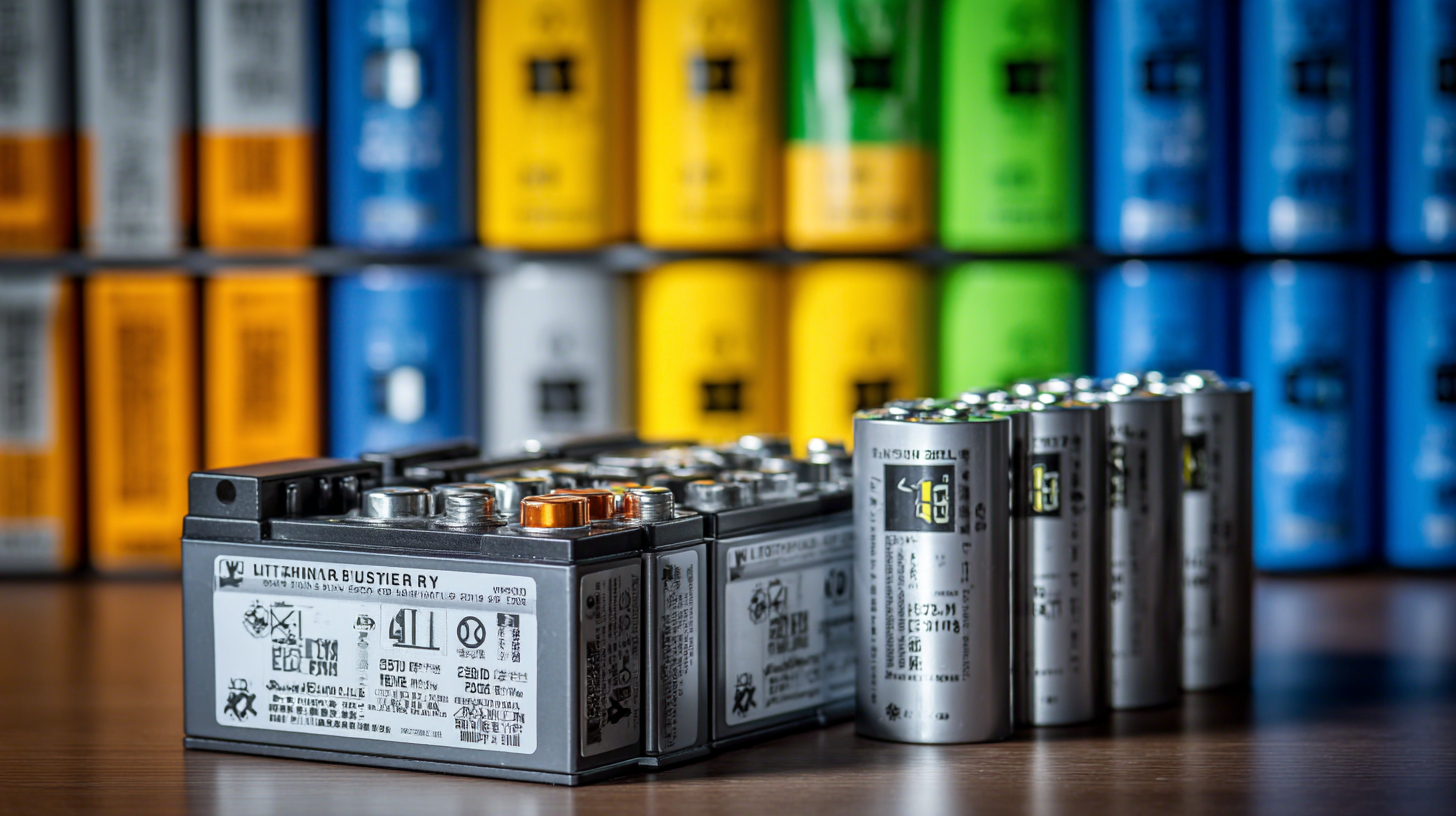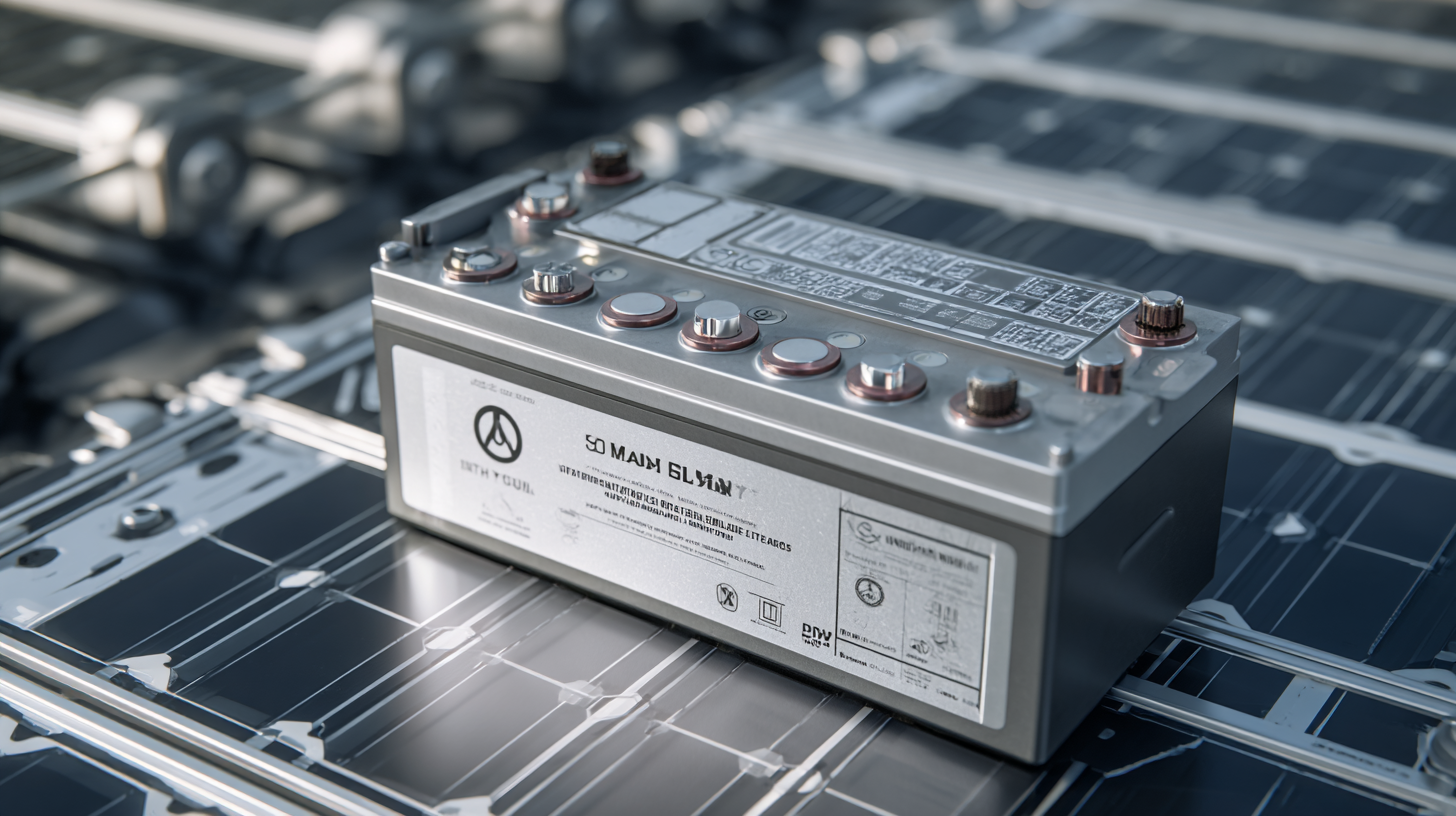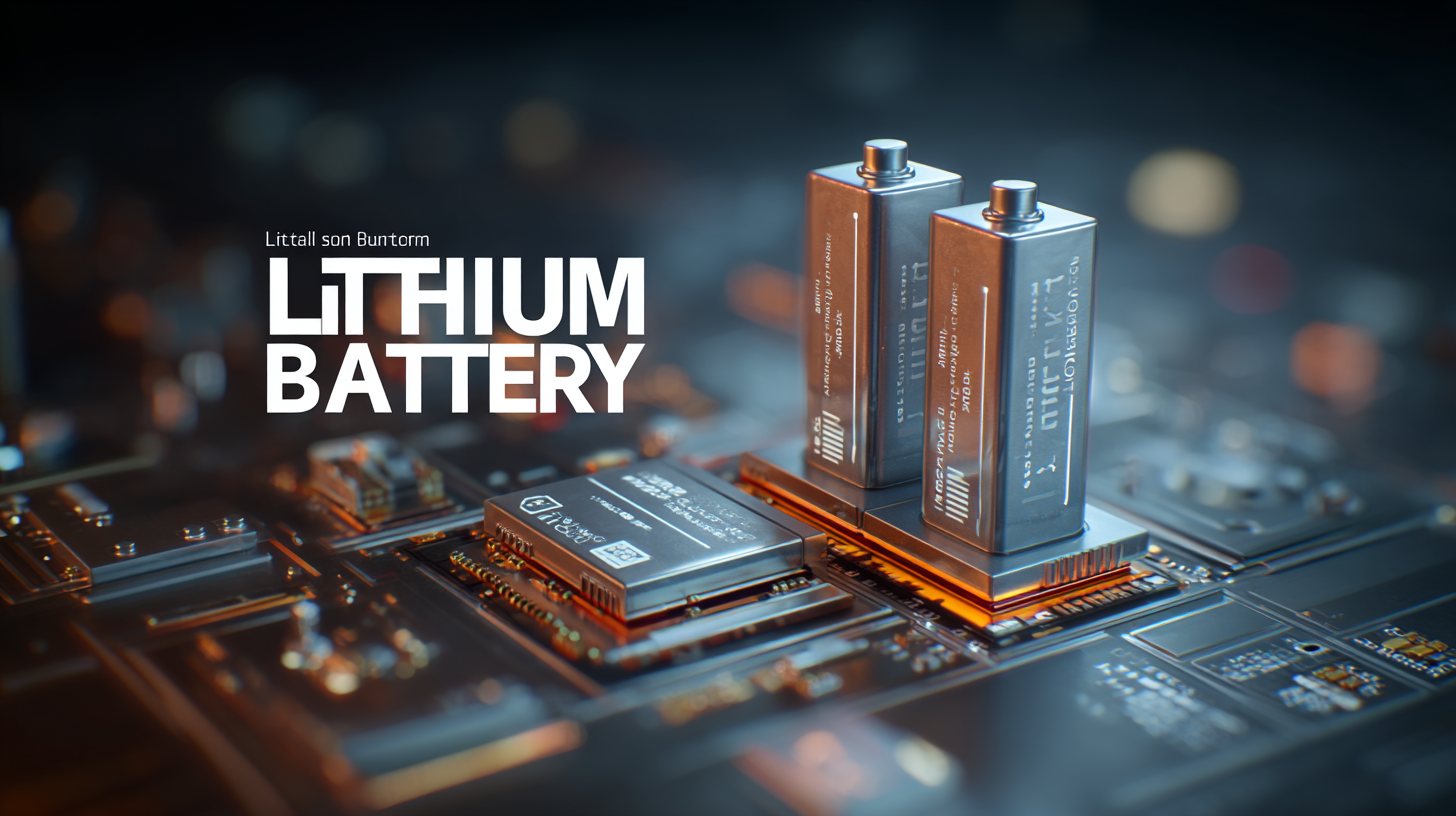
As the demand for renewable energy sources continues to rise, lithium batteries have become a pivotal component in optimizing solar energy systems. The Global Battery Alliance reported that the lithium-ion battery market is expected to witness a tremendous growth rate, projecting a CAGR of over 20% through 2026. This surge is largely driven by the increasing adoption of energy storage systems in both residential and commercial sectors, specifically tailored for solar applications.
 Lithium batteries for solar systems offer numerous advantages, including higher energy density, longer life cycles, and faster charging capabilities compared to traditional battery technologies. By harnessing the power of lithium batteries, solar energy systems not only become more efficient but also contribute significantly to reducing greenhouse gas emissions and enhancing energy independence. This blog will delve into a detailed comparison of the best lithium batteries available for solar energy systems, exploring their real-world applications, performance metrics, and long-term benefits.
Lithium batteries for solar systems offer numerous advantages, including higher energy density, longer life cycles, and faster charging capabilities compared to traditional battery technologies. By harnessing the power of lithium batteries, solar energy systems not only become more efficient but also contribute significantly to reducing greenhouse gas emissions and enhancing energy independence. This blog will delve into a detailed comparison of the best lithium batteries available for solar energy systems, exploring their real-world applications, performance metrics, and long-term benefits.
Lithium batteries have emerged as a game-changer in solar energy systems, offering numerous advantages that enhance their efficiency and reliability. One of the primary benefits of lithium batteries is their higher energy density compared to traditional lead-acid batteries. This means they can store more energy in a smaller space, making them ideal for residential and commercial solar installations where space may be limited. The lightweight nature of lithium batteries also simplifies installation and transportation, further contributing to their appeal in solar applications.
Another significant advantage of lithium batteries is their longer lifespan. With a typical cycle life of 2000-5000 charge-discharge cycles, they outlast traditional batteries significantly, reducing the need for frequent replacements. This longevity can lead to lower total costs over time, despite a higher upfront investment. Additionally, lithium batteries charge faster and hold a charge longer, ensuring that solar energy can be utilized efficiently. Their ability to perform well in a wide range of temperatures further enhances their usability in varying environmental conditions, making them a reliable choice for solar energy systems.

When it comes to solar energy systems, the choice of battery can significantly impact efficiency and longevity. Two leading contenders in the lithium battery market are Lithium Iron Phosphate (LiFePO4) and Lithium Nickel Cobalt Manganese (NMC). According to industry reports from the International Energy Agency, LiFePO4 batteries offer a longer cycle life, averaging 3000-5000 cycles, compared to the 1500-2500 cycles for NMC batteries. This attribute makes LiFePO4 particularly appealing for residential solar installations where reliable energy storage is crucial.

However, NMC batteries excel in energy density and power output, achieving energy densities of around 200-250 Wh/kg. This means they can store more energy in a smaller space, making them ideal for applications where space is limited. For instance, a report by BloombergNEF highlights that the demand for NMC batteries is increasing in electric vehicles and high-performance energy storage solutions due to their ability to deliver higher discharge rates efficiently.
Tips: When choosing between LiFePO4 and NMC batteries, consider your specific energy needs and space constraints. If longevity and safety are your primary concerns, LiFePO4 is likely the better choice. Conversely, if you need high power output and limited space, NMC might be the way to go. Always consult with a solar energy professional to tailor the best solution for your setup.
When considering solar energy systems for residential use, the cost-effectiveness of lithium batteries cannot be overlooked. Unlike traditional lead-acid batteries, lithium batteries offer a longer lifespan and higher energy density, making them a more economical choice over time. Homeowners can expect a return on investment through reduced energy bills and minimal maintenance costs associated with lithium technology. This financial advantage is particularly significant in states where solar incentives further enhance affordability.
**Tip:** To maximize your savings, consider scheduling your battery purchase when solar incentives peak in your area. Many regions offer rebates or tax credits that can significantly reduce the upfront cost of lithium batteries.
Moreover, lithium batteries are lightweight and require much less space compared to their counterparts. This is especially beneficial for homes with limited installation areas. As the effectiveness and affordability of solar batteries continue to improve, more homeowners are now able to harness the power of solar energy efficiently.
**Tip:** Always assess your energy consumption patterns to determine the appropriate battery size. A well-sized system will ensure that you’re getting the most out of your investment, providing backup power and optimizing your solar energy usage.
| Battery Type | Capacity (kWh) | Expected Lifespan (Years) | Cost ($) | Cost per kWh ($/kWh) | Return on Investment (Years) | Environmental Impact |
|---|---|---|---|---|---|---|
| Lithium Iron Phosphate | 10 | 15 | 3,000 | 300 | 5 | Low |
| Lithium Nickel Manganese Cobalt | 12 | 10 | 4,000 | 333 | 6 | Moderate |
| Lithium Polymer | 8 | 8 | 2,500 | 312.5 | 7 | Moderate |
| Lithium Titanate | 15 | 20 | 6,000 | 400 | 5 | Very Low |
In recent years, lithium batteries have emerged as a groundbreaking solution for off-grid energy systems, providing a reliable and efficient means to harness solar energy. Unlike traditional lead-acid batteries, lithium options offer higher energy density, faster charging times, and longer lifespan, making them ideal for applications where consistent power supply is critical. Off-grid homes, cabins, and remote locations benefit significantly from these innovative battery systems, allowing users to store excess solar energy for use during cloudy days or at night.
One of the most exciting applications of lithium batteries in off-grid scenarios is in mobile and recreational setups. Campers and RV enthusiasts are increasingly integrating lithium solutions to power appliances, lights, and electronics, transforming their travel experience. Furthermore, they support a range of renewable energy systems, including wind turbines and micro-hydro setups, ensuring a smooth transition to sustainable living. As technology continues to advance, the versatility and affordability of lithium batteries promise to unlock new possibilities for off-grid energy solutions, fostering a greener and more independent lifestyle for those who choose to live beyond the grid.
This bar chart illustrates the different applications of lithium batteries in solar energy systems, highlighting their capacity in kilowatt-hours (kWh) for various off-grid solutions.
The increasing adoption of solar energy systems has highlighted the importance of sustainability in the battery technology that powers them. According to the International Renewable Energy Agency (IRENA), the global energy storage market is projected to reach 1,600 GWh by 2040, with lithium-ion batteries playing a crucial role in this growth. However, the environmental impact of lithium extraction and battery disposal cannot be overlooked. Reports indicate that lithium mining can lead to significant ecological damage, including water scarcity and habitat disruption. As the demand for solar energy surges, the urgency for sustainable practices in lithium sourcing and battery recycling also escalates.
Recycling presents a viable solution to mitigate the environmental footprint of lithium batteries. The Bureau of Mines estimates that through effective recycling techniques, over 95% of lithium can be recovered and reused, significantly reducing the need for new raw material extraction. Moreover, advancements in recycling technologies are making it economically feasible; McKinsey & Company suggests that the market for recycled lithium could surpass $100 billion by 2040. This shift not only promotes sustainability but also improves the life cycle of lithium batteries, enabling them to be integrated more extensively into solar energy systems. As the sector evolves, prioritizing recycling will ensure that the solar technology of the future is both efficient and eco-friendly.